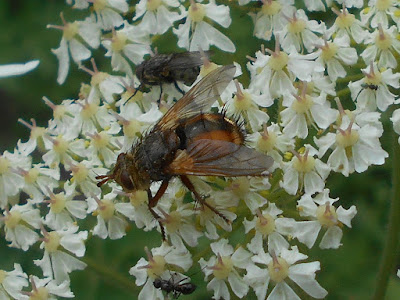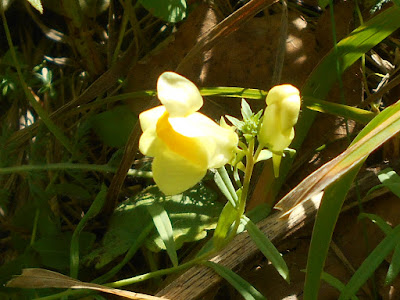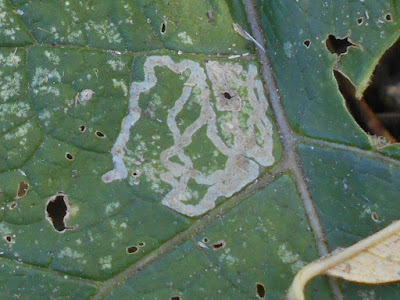 |
Curious speckles on an oak leaf. Byfield Pocket Park,
25 September, 2019
|
A look at the lower side of the leaf helped to explain what was happening. A blister-like mine had been created by a moth, Phyllonorycter quercifoliella. Known as the Common Oak Midget (although, as I have said before, no lepidopterists actually use these made-up English names) it is both common and widespread.
Perhaps more interesting is the Ram's Horn Gall, Andricus aries, also found on oaks. It is related to the Hedgehog Gall but takes on a quite different form. It can indeed look like a long curved horn, often double but very variable.
Galls, mines and fungi together make an interesting miscellany of species to look forward to on country walks during the early autumn.
 |
The underside of the leaf shows that Phyllonorycter quercifoliella
has been at work.
|
Oddly, although mines or galls usually leave a brown or greyish blemish, there are occasions when the opposite is the case. In this example, again on an oak, the normal development of autumnal coloration has somehow been interrupted by the work of - what? The effect is almost startling.
 |
Curious areas of green on an otherwise autumnal leaf.
Stefen Hill Pocket Park, 29 September, 2019
|
In Stefen Hill Pocket Park a Sycamore, Acer pseudoplatanus, appears to have been sprayed with white paint. Uncinula tulasnei, otherwise known as Sawadaea tulasnei, is very commonly seen in the autumn and some years ago I recorded it at Byfield, Northants.
 |
| Who has been spraying these leaves with white paint? |
It seems to do little harm, the affected trees growing vigorously the following year, and in a curious way can sometimes be quite attractive. If this was simply a genetic fault as in some variegated forms of ivy or hosta, the plant would probably be carefully propagated.
 |
It is, of course a form of powdery mildew, more precisely the fungus,
Uncinula tulasnei. Stefen Hill Pocket Park, Daventry. 29 September, 2019
|
Can a gall be called a blemish? Certainly there are plenty to be seen at this time of the year, particularly on oaks. The Hedgehog Gall, Andricus grossulariae, tends to be rather sticky and, initially green, turns brown during the autumn.
 |
The Hedgehog Gall is a frequent feature of oak trees in the early autumn.
Stefen Hill Pocket Park, 30 September, 2019
|
 |
The Ram's Horn gall is very variable in shape.
Stefen Hill Pocket Park, 30 September, 2019
|
In some cases, like the second example, the 'horn' can be almost straight. It is a widespread species but both this and the Hedgehog Gall are new records for Stefen Hill Pocket Park.
 |
Occasionally it can be almost straight. Stefen Hill Pocket Park, Daventry.
30 September, 2019
|
Galls, mines and fungi together make an interesting miscellany of species to look forward to on country walks during the early autumn.










































